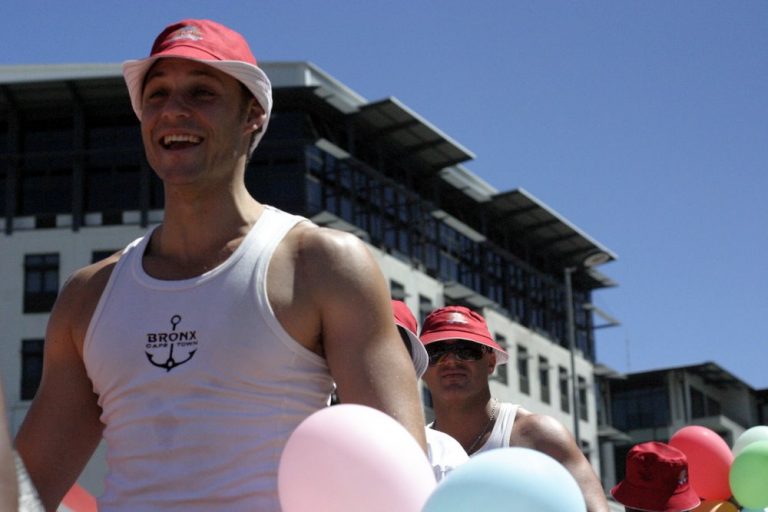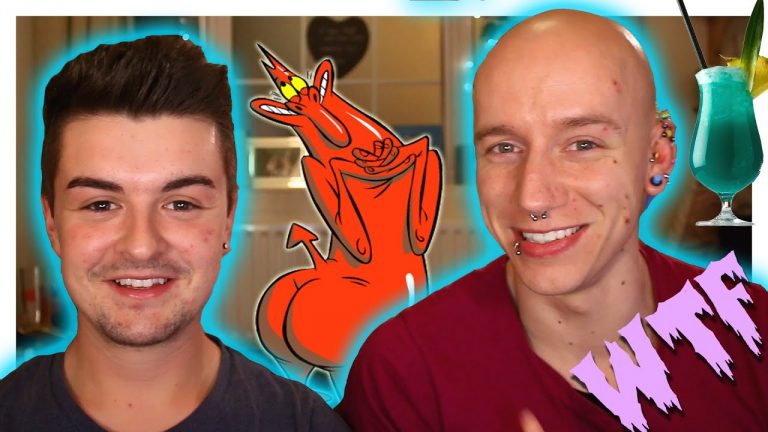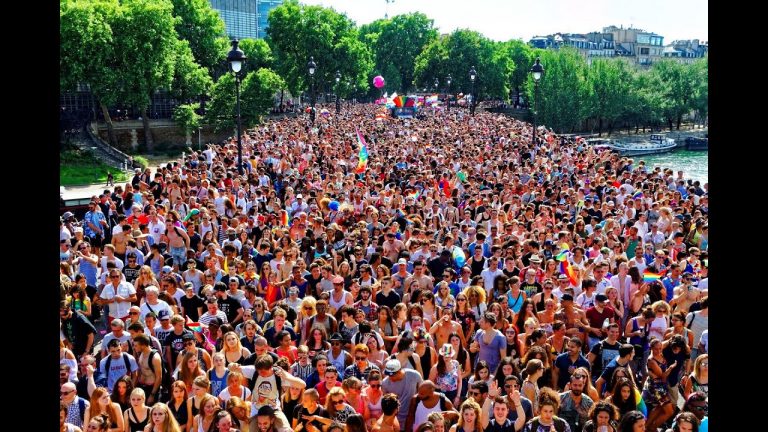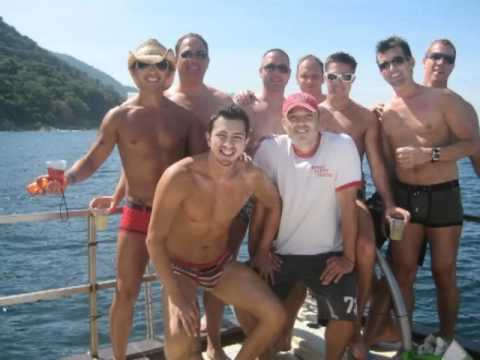Cape Town offers travelers a small but vibrant gay scene
The undisputed gay capital of the African continent, Cape Town has something of the progressive vibe, stunning coastal scenery, and sunny disposition of similarly appealing seaside cities, such as Sydney, San Francisco, and Vancouver. Part of a peninsular region that juts into the Atlantic Ocean along South Africa’s southwestern coast, Cape Town has become increasingly popular with visitors from North America, offering travelers a small but vibrant gay business district and wonderful opportunities for day-tripping along the coast and inland to the lush vineyards and swank country inns of the Winelands regions.
There are some logistical issues to consider when planning a trip to this city, which is about 6,000 miles from London, 8,000 miles from New York City, and 10,000 miles from Los Angeles. It takes up to two days to get here and again to return home, and airfares are quite steep. The good news is that North American and European currency are relatively strong against South African currency, the Rand, meaning that you’ll generally encounter good values in hotels, restaurants, and shops once you’re here.
Related: A Gay Traveler’s Guide to Cape Town
Another thing to keep in mind when traveling such a long distance is that it’s prudent to plan a trip of at least 10 days, and ideally 15 days. South Africa is famous not just for Cape Town and the surrounding area, but also for the safari lodges that proliferate in the wildlife-rich Kruger National Park, in the northeast part of the country. Many visitors plan a trip that includes a week or so in greater Cape Town, and another week in Kruger or at a safari camp in a nearby country, such as Botswana, Namibia, or Zimbabwe.
If you’re going this route, your best strategy is to book your vacation through a reliable tour operator. Consider the highly regarded and very gay-friendly Premier Tours, which is based in Philadelphia and run by South Africa native Julian Harrison. Premier offers a wide range of preplanned itineraries to South Africa and several other African nations, but they can also design a custom itinerary for you. Sales Associate Steve Gleba is Premier Tours’ LGBT travel specialist and can help design a trip that’s geared especially toward staying in gay-friendly or gay-owned accommodations.
No matter how you organize your trip, plan to spend at least half your time in and around Cape Town. Right in the city, there are several attractions of note, including Iziko South African Museum, Iziko South African National Gallery, and Table Mountain, the looming geographical feature that defines the city skyline – you can take an aerial cableway to the top of this 3,500-foot behemoth. It’s also worth spending an afternoon strolling around the V&A Waterfront, with its shops and restaurants, Two Oceans Aquarium (an excellent facility with more than 8,000 sea creatures), and the South African Maritime Museum. You can also take the ferry from here to Robben Island, where Nelson Mandela was jailed for 18 years. It’s now a UN World Heritage Site and museum (with tours led by former prisoners).
Allow at least one day to make the drive south of the city along the coast, past such ritzy residential neighborhoods as Camps Bay (with its views of the ocean on one side, and the Twelve Apostle mountains on the other) and Clifton, with its lavish seaside and cliff-top homes. Stop in the bustling, if somewhat touristy, fishing village of Hout Bay (where you can take excursion boats out to the massive seal colony on Duiker Island, or to view whales), and continue south through Simonstown to see Boulders National Park, home to 3,000 jackass penguins (named for the braying, donkey-like noises they make). A boardwalk down along the beach affords up-close encounters with these fascinating animals.
Farther south, a spectacular drive leads to the Cape of Good Hope Nature Preserve, which has good hiking, lofty peaks, spectacular beaches, and interesting wildlife. Beware of the baboons here, who sometimes behave aggressively toward people. If you’re curious about these clever animals, take a walking tour with Baboon Matters, an animal advocacy organization in Glencairn (on the road between Cape Town and Cape of Good Hope preserve). These fascinating tours led by experienced guides take you right into a habitat of relatively tame and approachable baboons.
Back in the city of Cape Town, you’ll find that much of the gay scene revolves around De Waterkant, a compact district of cobblestone streets on the northeastern edge of downtown, not far from the V&A Waterfront. In this little quadrant you’ll find several excellent restaurants and cafes, including atmospheric Anatoli for excellent Turkish cuisine, Andiamo Deli and Restaurant for contemporary Italian fare with attractive patio seating, and Cafe Manhattan, which has live music some nights and is as much a gay bar as a gay restaurant. A more upscale choice on the edge of De Waterkant is the Showroom, a slick, white-on-white space known for some of the most creative modern South African cuisine in the city, plus great people-watching. Stop by Origin for some of the best coffee around – a bohemian atmosphere prevails at this lively cafe.
Cape Town excels when it comes to dining, with other notable options including Fork, a sexy tapas restaurant and lounge, and Jardine, which turns out such dazzlingly innovative fare as confit of roasted guinea fowl with orange-braised endive. In the V&A Waterfront, try gay-friendly Belthazar, a sprawling steakhouse and seafood eatery.
For nightlife, De Waterkant is again your best bet. Head to the Bronx, a cruisy guy’s bar; Bar Code, the city’s top venue for men in leather and uniform; and the Loft Lounge, a hip spot for hobnobbing and cocktails. For lesbians, there’s Lush, a roving Saturday night party that was, as of this writing, taking place at the Junction Cafe – the Lush website has details. Also in De Waterkant you’ll find Cape Town’s popular gay sauna, the Hothouse, an attractive and rather upscale spot with a restaurant, bars, and spotless cabins and common facilities. Of particular note is a sundeck affording superb views of the city.
Greater Cape Town abounds with gay-friendly inns and B&Bs – there are plenty of worthwhile options in a variety of price ranges. The Grand Daddy is a modern boutique hotel in the heart of downtown, close to the many restaurants and shops along the main thoroughfare, Long Street. Rooms are comfy and spacious, and some have small balconies overlooking the street. There’s an excellent restaurant, Veranda, on the second floor.
Among the city’s best guest houses, consider 4 on Varneys, a luxurious six-room inn with a lushly landscaped courtyard and sleek, modern rooms; or the Charles, an intimate property in the heart of De Waterkant. The 12 rooms and four cottages are done with swank furniture and have deep tubs and separate showers. A top choice for lesbians is Colette’s B&B, an affordable and tastefully done two-room inn for women in a suburb just outside of the city center (close to good hiking and wine-tasting).
The Winelands wine country makes for an enjoyable day trip, but if you have time, try to spend a night or two out this way. This verdant, sunny region east of Cape Town is dotted with engaging towns, the most scenic and sophisticated being Franschhoek, Stellenbosch, and Paarl. The area is known for a distinctive red wine called Pinotage, but it also produces excellent Shiraz, Chardonnay, and many other vintages. One winery worth checking out is Fairview, noted not just for its stellar wine but also for its fantastic gourmet cheeses and garden-side restaurant. For a more intimate experience, drop by Muratie Winery, an small vineyard producing first-rate Pinot Noir and Shiraz.
As is often the case in wine regions, the Winelands has plenty of urbane restaurants and gourmet food and cheese shops. Of particular note is Le Quartier Francais, a foodie mecca for its restaurant, which has made more than a few “best in the world” lists; this Relais & Chateaux country inn also boasts stunning rooms with giant soaking tubs and plenty of cushy amenities. Also in Franschhoek, Mont Rochelle Hotel & Mountain Vineyards offers plush accommodations and excellent food, and nearby Cabriere ranks among the town’s top wineries. If you’re on a bit of a budget, try Franschhoek’s gay-owned Maison Chablis, a warmly furnished seven-room country house with a pool and serene, landscaped grounds.
Stellenbosch, a historic university town with numerous 18th-century buildings done in the region’s enchanting “Cape Dutch” style, also has a number of excellent restaurants, plus great shopping. Consider staying at the charming D’Ouwe Werf 1802, South Africa’s oldest inn – it also has a fine restaurant. Another good choice is gay-friendly Villa Exner, a bit south of Stellenbosch along the region’s scenic “Garden Route.” This posh country estate has spacious rooms with flat-screen TVs, a large outdoor pool, and a restaurant serving acclaimed country fare. At this property, you’re close to the three elements that make this part of the world so special: prolific vineyards, turquoise seas, and emerald mountains.
Related: A Gay Traveler’s Guide to Cape Town






